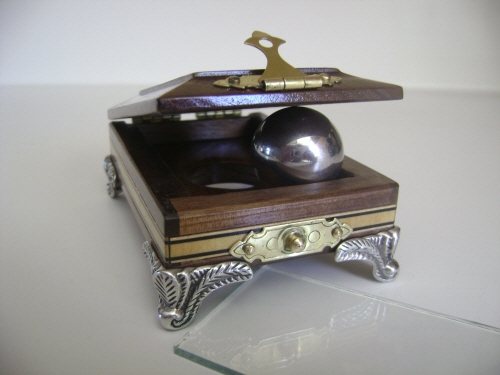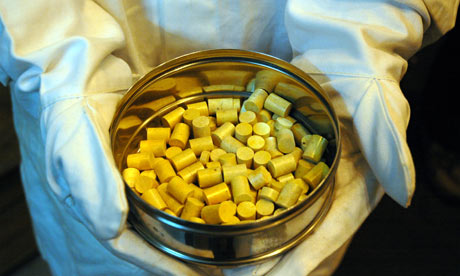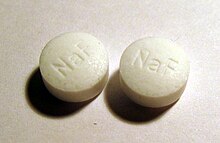Energy
This
past week, EnerVault – a company which has developed a unique
iron-chromium redox flow battery technology – dedicated its
utility-scale Turlock demonstration storage project in California’s
Central Valley. This redox flow battery storage system can deliver one
megawatt-hour of energy from a 250 kW battery that can perform at that
rated level for four hours.
The Turlock project is particularly interesting, as it is located next to a 150 kW solar system and a 260 kW irrigation pump, helping to optimize the overall system, storing the sun’s energy and releasing it when needed. Funded in part by over $4.7 million from the US Department of Energy and $476,000 from the California Energy Commission, the project is meant to demonstrate the feasibility of iron-chromium redox flow batteries as reliable utility-scale storage resources.

Redox flow batteries, a subset of the general class of battery
architectures known as flow batteries, are intriguing beasts. Unlike
their famous cousin, the lithium ion technology which is getting so much
attention as part of Tesla’s proposed $5 billion gigafactory, flow
batteries are not light, and they are not designed to deliver power
instantaneously. But they don’t need to get you from zero to sixty in
four to five seconds. Instead, they are designed to be the workhorses of
the industry; to hold a significant charge indefinitely and to deliver
kilowatt-hours as reliably and cheaply as possible.
Flow batteries as a class come in a number of different emerging technologies, from zinc-bromine, to vanadium redox to iron-chromium. Where they differ from most batteries is that the rechargeability is created by chemicals dissolved in liquids contained within the system. These are usually isolated by a membrane (similar to a fuel cell), or in the case of EnerVault, a significantly less expensive separator.
A very large advantage of redox flow batteries is that the electrolyte that is charged and discharged to store energy is contained within a closed-loop system, with the bulk of the electrolyte stored externally, generally in tanks, and pumped into the cell stacks as needed. The tanks of electrolyte hold their charge virtually indefinitely because no phase change or plating occurs in a redox flow battery and thus the electrolyte is a capital cost and permanent asset. Another advantage is that once you have built the initial system, you can increase the energy storage capacity simply by adding more electrolyte.
As a consequence, redox flow batteries may hold great potential for replacing gas-fired peaking power plants, and for providing badly needed grid stabilization services. They also hold an advantage over gas-fired generation plants in that they don’t need to be located near gas lines, require no water for cooling, and don’t emit noise or local pollution. Such services will be vital if we are to safely and reliably integrate large quantities of renewable energy into the power grid in the long-term.
I recently had the opportunity to discuss the company and its opportunities with EnerVault’s CEO Jim Pape, who joined the company in May of last year. Pape explained that EnerVault is your classic cliché Silicon Valley start-up, in the sense that the founders – holders of graduate degrees in energy engineering from Berkeley – started the company in 2008 in a Sunnyvale garage.
Pape comments that the redox flow battery approach is not that dissimilar to a gas turbine in its performance within the power grid, although the focus is on energy (delivering kilowatt-hours over extended timeframes), rather than capacity (delivering a higher amount of power within a shorter timeframe).
Pape is confident that redox flow batteries are the logical dance partner to renewables, and that this segment of the industry has significant potential for growth, which is part of the reason for co-locating with solar in the Turlock project.
The Turlock project is particularly interesting, as it is located next to a 150 kW solar system and a 260 kW irrigation pump, helping to optimize the overall system, storing the sun’s energy and releasing it when needed. Funded in part by over $4.7 million from the US Department of Energy and $476,000 from the California Energy Commission, the project is meant to demonstrate the feasibility of iron-chromium redox flow batteries as reliable utility-scale storage resources.

Image: EnerVault – The Turlock Project
Flow batteries as a class come in a number of different emerging technologies, from zinc-bromine, to vanadium redox to iron-chromium. Where they differ from most batteries is that the rechargeability is created by chemicals dissolved in liquids contained within the system. These are usually isolated by a membrane (similar to a fuel cell), or in the case of EnerVault, a significantly less expensive separator.
A very large advantage of redox flow batteries is that the electrolyte that is charged and discharged to store energy is contained within a closed-loop system, with the bulk of the electrolyte stored externally, generally in tanks, and pumped into the cell stacks as needed. The tanks of electrolyte hold their charge virtually indefinitely because no phase change or plating occurs in a redox flow battery and thus the electrolyte is a capital cost and permanent asset. Another advantage is that once you have built the initial system, you can increase the energy storage capacity simply by adding more electrolyte.
As a consequence, redox flow batteries may hold great potential for replacing gas-fired peaking power plants, and for providing badly needed grid stabilization services. They also hold an advantage over gas-fired generation plants in that they don’t need to be located near gas lines, require no water for cooling, and don’t emit noise or local pollution. Such services will be vital if we are to safely and reliably integrate large quantities of renewable energy into the power grid in the long-term.
I recently had the opportunity to discuss the company and its opportunities with EnerVault’s CEO Jim Pape, who joined the company in May of last year. Pape explained that EnerVault is your classic cliché Silicon Valley start-up, in the sense that the founders – holders of graduate degrees in energy engineering from Berkeley – started the company in 2008 in a Sunnyvale garage.
They determined that an iron-chromium redox flow battery was the correct solution for delivering large amounts of energy safely and in a cost-effective manner. Then they got some funding, and from there it’s been an unwavering focus on the technology, with no changes in the intended goal, which was grid-scale, long-duration storage. They raised money in 2009 for a market that sounded hard and complicated and unknown at that time.Five years later, the company has tested multiple units in the lab, including a 30 kW test system supported by DOE ARRA and CEC grants, that has performed for two years. Now, the company is finally out in the field with an actual grid-connected unit.
Pape comments that the redox flow battery approach is not that dissimilar to a gas turbine in its performance within the power grid, although the focus is on energy (delivering kilowatt-hours over extended timeframes), rather than capacity (delivering a higher amount of power within a shorter timeframe).
Our new storage system is a long-duration, grid scale storage system, so our specialty is in storing large amounts of energy. We can provide all of the grid ancillary services a combustion turbine can, but we are not a super high speed, short response, battery system. The system does indeed respond in seconds – but you wouldn’t think of using this system merely for ancillary services or frequency regulation.He’s also clear that these units are built for utility scale, and as such, they rely on public policy and regulatory decisions. California’s Assembly Bill 2514 was key. That bill directed the state Public Utilities Commission to establish targets for energy storage. In October of last year, the PUC directed the California utilities to obtain 1,325 MW of storage by 2020. On the day following the PUC announcement, the Long Island Power Authority issued an RFP with large storage targets. For EnerVault and others in the storage arena, it was like Christmas in October.
When AB 2514 hit and Edison wants 50 MW of four-hour duration storage – that was one of the most amazing inflection point days for employees and investors in a long time. That was immediately followed by LIPA’s 150 MW of 12-hour storage RFP…We have already started bidding into utility-scale storage opportunities that are being procured now for 2017-2018 timeframe.EnerVault expects to win its fair share of U.S.-based projects, but it is also looking at global opportunities where its technology is cost-effective and ready to be deployed.
It’s very much like solar where the initial heat map is defined by economic conditions that lead one to look at specific places and countries around the world where the business will be most active first. And that’s defined by flexibility as much as by economics. For example, it may be a place in Africa without a gas pipeline, where they can add renewables, but they need renewables to be dispatchable. Solar and renewables plus storage is an increasingly economically way to build power plants where we are competing against diesel.While he is optimistic about the potential to grow the business rapidly, Pape is also prudent, noting that successful growth is neither easy nor inevitable
Our challenge is going from a small company to going to large-scale energy projects – there are plenty of examples of how not to do that in the solar graveyard…. We will go to logical locations to improve probability of success, to help achieve bankability. We have to line up a first round of projects which logically scale in size and inform our needs to attract financing at reasonable rates and availability. We are introducing a new generation asset class and that’s not something you do casually.EnerVault’s redox flow battery systems are easy to assemble, with elements that arrive at the site in container-sized modules, and they are made from easy-to-procure components. That is one reason Pape is so bullish about his long-term chance for success in the marketplace, even in the face of potential storage competitors like Tesla. He notes that – unlike lithium – the chemicals used in his technology are common, cheap, and easy to acquire.
I don’t have to have a factory. All I need to build is the cells and stack – there is no gigawatt factory required. I am going to be the big energy storage guy because the tanks come from a supplier, the pumps come from a supplier. Power conditioning and controls – all arrive at the job site with my cells and stacks, so I don’t have to inventory. I have a very cash efficient business model, with 80% as pass through. We will make an announcement shortly with respect to a partner who can build these facilities at low cost. This scales rationally and fairly easily – there’s no $5 billion gigafactory.The other beauty of redox flow batteries is the increasing economies of scale that result from the nature of the technology.
Redox flow battery is just magic –we just pump water from one tank to another through a cell stack. They are highly reliable and highly dispatchable…The cost of energy goes down as you go up in duration. Once you build the power section, you just add more electrolyte for duration. So the cost for energy storage capacity is lower and lower and lower. Hour twelve costs less than hour one – which gets used more frequently.As far as interaction with the power grid, and optimizing the behavior, EnerVault is leaving that to other partners. Their ambit is the software controlling the water-treatment like chemical plant, while partner software talks to the grid or customer, and optimizes interaction of the system (author’s note –companies such as Greensmith focus exclusively on this space). Pape is comfortable with that division of responsibilities, since the external facing software is dealing with a varied and complex universe, with protocols and standards that may vary by utility, regional transmission operator, and by country.
Pape is confident that redox flow batteries are the logical dance partner to renewables, and that this segment of the industry has significant potential for growth, which is part of the reason for co-locating with solar in the Turlock project.
Solar system IRRs get better with storage, and it’s the same with wind – we have been able to model these. The numbers are starting to work, which are enabled by our cost curves…We are working with many wind developers and others that also need to provide generation time shifting as well as voltage support and some frequency regulation support.Long-term, Pape expresses confidence that his company is well positioned for survival and success over both the near-term and the long-haul.
The guys who are going to win in the 2017 procurements are those who are out there and already in business. You can name them. That doesn’t cast the die for the rest of eternity, but winning early is better than not. We have demonstrated to the megawatt-hour scale, and we have the economics based on our chemistry.In the rapidly evolving storage race, there will be many changes, but some things are nearly certain: the rapid pace will continue, technologies and business models will continue to improve, and new use cases will emerge. Many battery and storage companies will thrive and help to reshape the power industry. With its megawatt scale iron-chromium storage systems, EnerVault clearly expects to be a key player in the mix.













